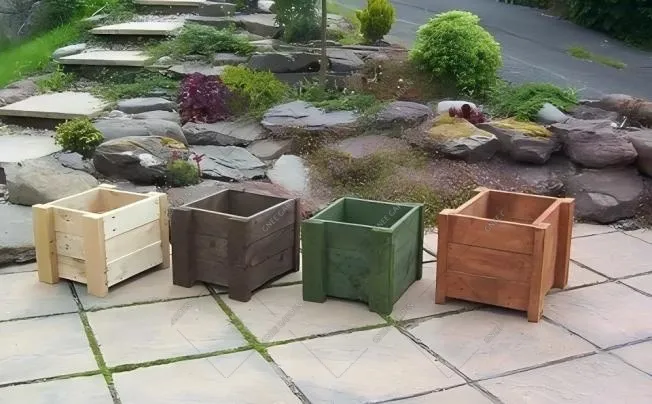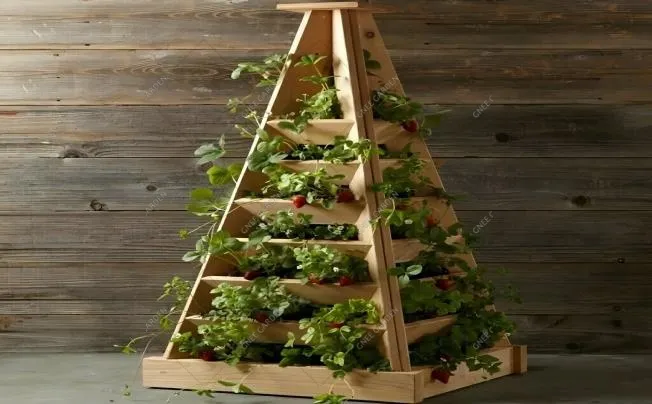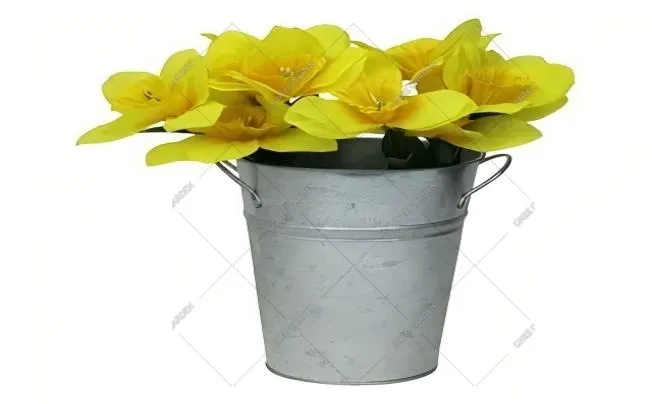What Is The Difference Between A Flower Pot And A Planter?
Pots and planters differ significantly in a number of ways when it comes to gardening.
Exterior Style
Flower pots are often modest and beautiful, and they come in a variety of designs, including square and round, as well as imaginative shapes like cartoon characters and vintage jars. They are coordinated with indoor furniture and ornaments, have delicate surface paintings and textures, and pay attention to details and decorativeness. They are the focal points of interior design.
The majority of planters are typical rectangular and cylindrical, thin and attractive, and emphasise practicality and simplicity while integrating with outside landscapes and architecture. Small planters are positioned along balconies and courtyards to improve the sense of space hierarchy and continuity, while large planters are utilized to divide and adorn public areas. The basic, organic texture and colour of the cloth go well with the verdant plants and exhibit their inherent energy.

Size capacity
Planters come in a variety of sizes; small ones are 30-50 cm long, 20-30 cm wide, and 20-30 cm high, while large ones are over 1 m long, half a metre wide, and high. These latter can hold large plants and mixed plantings, and they have a capacity of dozens of litres or more. Flowerpots, on the other hand, are typically small, measuring 10-20 cm in diameter and 10-15 cm in height, and are used for succulents and small green plants.
In the courtyard, small flowerpots are used to adorn the edges of tables and chairs, while large planters are used to create central flower beds to plant large flowers or fruits and vegetables to meet various planting needs. On the balcony, small flowerpots are placed on the windowsill to grow succulents, medium-sized flowerpots are used to plant petunias and other embellishments, and planters can be installed along the railings to plant geraniums and other flowers to form flower belts.
Material properties
Clay is frequently used to make flower pots because it is porous, permeable, and has a high water absorption capacity, all of which help plant roots breathe. Ceramic materials are fired at high temperatures, are strong and long-lasting, have a beautiful appearance, a smooth glaze, and are painted to enhance decorativeness; however, they are fragile and heavy, and their drainage and air permeability are a little poor. Plastic materials are light, inexpensive, colourful, and uniform in specifications, making them ideal for batch seedling cultivation and indoor placement.
When it comes to planters, wooden planters are typically composed of antiseptic wood that blends in with the outside setting, has lovely natural wood grain, and is breathable and water-permeable. Metal planters like stainless steel and aluminium alloy have high strength, durability, waterproof and moisture-proof, insect-proof, strong plasticity, easy maintenance, and convenient installation. They can be customized in a variety of shapes, but they are prone to insects and have a short lifespan. Stone planters are similar to marble and granite in that they are heavy-textured, simple, elegant, resistant to degradation from wind and rain, and have a very long lifespan. Aluminium alloy also comes in a wide variety of colors, but it transfers heat quickly and requires insulation in the summer. It is difficult to haul and install, has poor air permeability, and typically depends on the slope that is intended.

Functional purpose
Indoor flower growing and decorating are the primary uses for flower pots. To provide color to the house, they are set up on desks, balconies, and windowsills. Planters are mostly used for outdoor landscape construction, such as park flower beds, roadway isolation belts, and courtyard boundaries. They are compact, adaptable, and simple to move and reposition to suit various scene layouts. In order to create flower clusters and landscape belts, they can plant several plants and move a lot of earth. They are strong and dependable once installed, withstand wind and rain, separate spaces, and provide a neat outdoor environment.
Planters can be used to construct micro vegetable gardens, create themed flower landscapes, and create popular science displays in schools and communities, fusing beauty and functionality. Ingeniously, flower pots can be combined and hung to create sky gardens, and old flower pots can be converted into micro landscape containers.
Tips for choosing flower pots or planters
Prior to selecting a flower pot, consider the traits of the plant. Use shallow tiny ceramic pots or plastic pots for flowers with fleshy roots and shallow roots. Select tall, permeable purple sand pots for orchids and other fleshy roots. Use solid, sun-resistant flower troughs for the outside courtyard, enormous ceramic pots in the living room's corners, a range of combinations for the balcony, and delicate little flower pots on internal windowsills for positioning space.
If you have a limited budget, go for clay or plastic pots; if you have a medium budget, go for ceramic or wood pots. You can select purple sand, metal sculptures, and personalized stone planters if you value quality over price. Make every cent worthwhile, combine promotions, compare more online and offline, and design the ideal "home" for green plants.

Selected Blogs
-
What customization services are available for metalworking customization?
2024-12-12
-
What Is The Difference Between A Plant Container And A Raised Bed?
2024-04-23
-
Garden Screening & Fence Panels
2024-04-23
-
Gardening pot selection tips
2024-04-17
-
The function and collocation of horticultural fire pot
2024-04-17


